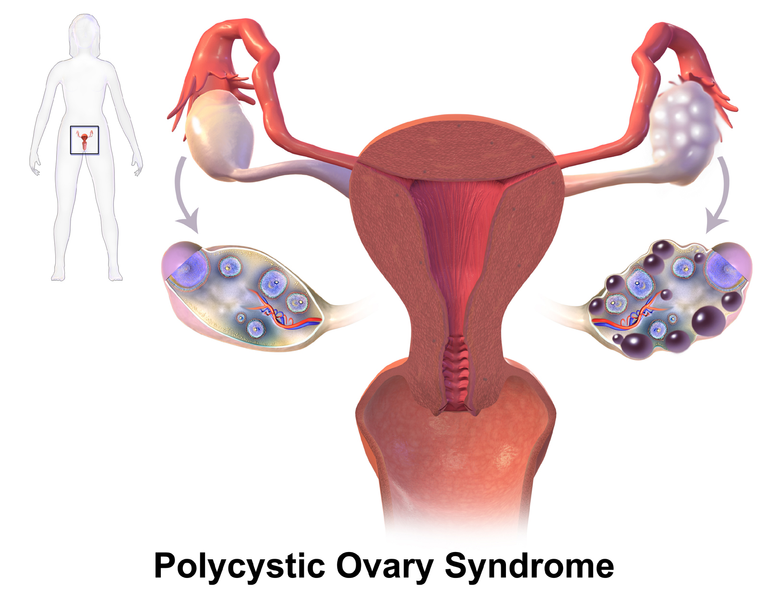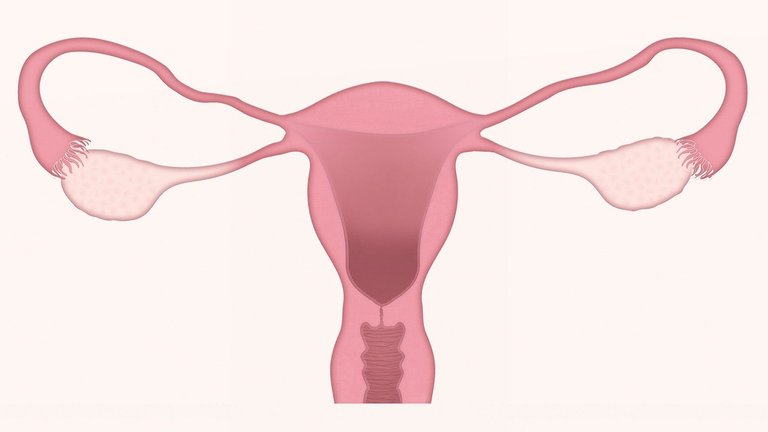Comprehensive Review on Polycystic ovary syndrome (PCOS)
There are a lot of diseases, it is important to know that not all medical cases are diseases. Some are dysfunctions, disorders, and conditions. In this post, we will be discussing polycystic ovary syndrome (PCOS) which is a result of a hormonal disorder that leads to a condition that is made up of a constellation of symptoms, and its causes are not fully understood but you trust that we scientist will always have something meaningful and factual about it. As the name implies, Polycystic ovary syndrome (PCOS) has to do with multiple cysts in the ovary. While the etiology is unknown, there is a high risk of having polycystic ovary syndrome (PCOS) which includes obesity, insulin resistance, type 1 and 2 gestational diabetes, first-degree relatives with Polycystic ovary syndrome (genetics), and Premature Adrenarche.
The brain makes the Gonadotrophin-releasing hormone (GnRH hormone) which travels in the blood to the pituitary gland. Quick one, as a medical, biology, or anatomy student, you should know that Enzymes are secreted to the required area and substance, while hormones are released into the blood to travel to the area where it is needed. In the pituitary gland, two hormones are released. These hormones Follicle Stimulating Hormones (FSH), and Luteinizing hormone (LH) are released into the bloodstream and then to the Ovaries. Let's quickly do the Ovaries.
You see, the reproductive system is made up of the Uterus, the Fallopian Tube, Endometrium, and the Ovaries. These parts of the system have a role a play during menstruation. In each ovary, there are numerous follicles cells composed of Ovum (Imatured eggs). At the beginning of the cycle, the follicle-stimulating hormone from the pituitary gland stimulates the follicle which allows its immature eggs to grow. The immature eggs grow to release estrogen hormone which goes into the bloodstream sending signals to prepare to Uterus for fertilization, causing the lining of the Uterus to thicken. Only one Follicle Ovum gets mature while the rest disintegrate. The Luteinizing hormone is responsible for stimulating Ovulation. The dominant egg detaches from the follicle and expels the egg to the fallopian tube. At the end of the fallopian tube is the Frimbrae which is responsible for collecting the egg and transporting it to the fallopian tube entrance. The egg is transferred to the middle of the fallopian tube. On day 15, progesterone hormone is produced in the ovary causing extra strength and causing a whitish egg-like discharge and this causes the female to want to be with their partner more. When the progesterone reduces, premenstrual syndrome begins such as mood swings, pimples, inflammation, fluid retention, pain, sensitivity, and colic. At 28 days, the menstrual cycle is completed, and contractions occur known as menstrual cramps. The Ovum and the think layer formed in the endometrium are discarded as menstruation. If the egg is fertilized, it will stay in the Uterus but if it is not, the disintegration begins.
With Polycystic Ovary Syndrome (PCOS) there is an abnormal release of Gonadotrophin-releasing hormone (GnRH hormone). Instead of being released in a regular manner, the hormone is released at a higher frequency. As expected, an increase in Gonadotrophin-releasing hormone (GnRH hormone) will lead to a decrease in Follicle Stimulating Hormones (FSH), and an increase in Luteinizing hormone (LH) release. The lower Follicle Stimulating Hormones (FSH) causes the follicles to not mature enough and not ovulate which prevents the Corpus Luteum from producing preventing a surge in progesterone. The lack of progesterone will for sure lead to an increase in the syndrome. The follicle that does not ovulate become cysts that form at the ovary as a result of failed follicular ovulation. The high LH levels stimulate the Theca cells are cause the production of androgens or testosterone which causes other symptoms like Acne, menstrual irregularities which can start when the patients reach puberty, Oligomenorrhea or Amenorrhea, Hirsutism, and infertility. Polycystic ovary syndrome (PCOS) is also associated with the Pancreas specifically insulin. The pancreas releases insulin which also causes Androgen and insulin resistance. This condition can lead to pre-diabetes or diabetes. Medical conditions associated with polycystic ovary syndrome (PCOS) include being overweight or obese, which can lead to type 2 diabetes, dyslipidemia, Obstructive sleep apnea, non-alcoholic fatty liver disease, depression, anxiety, anovulatory infertility, insulin intolerance, endometrial hyperplasia which can be a risk for endometrial cancer.
Treatment of Polycystic ovary syndrome (PCOS) starts with a healthy lifestyle, weight loss, good sleep, and stopping smoking. Other medical treatments for polycystic ovary syndrome (PCOS) include using birth control pills which help lower testosterone levels and would increases menstruation. Drugs like Metformin help to reduce insulin production in the pancreas. In cases of Hirsutism, Sproule Lactone helps with excess hair growth, and drugs like Medroxyprogesterone acetate can be given to patients, also to treat androgen, Spironolactone, and finasteride can be given, and Gonadotrophin-releasing hormone (GnRH hormone) agonists can be given which will help stabilize the menstrual cycle.
If you see any irregularities in periods as a female, then you should visit the physician so you can get tested. Scanning can be used to identify these cysts in the ovary. It is also important not to forget that lifestyle changes are the first treatment for polycystic ovary syndrome (PCOS). Thanks for reading.


Thanks for your contribution to the STEMsocial community. Feel free to join us on discord to get to know the rest of us!
Please consider delegating to the @stemsocial account (85% of the curation rewards are returned).
Thanks for including @stemsocial as a beneficiary, which gives you stronger support.